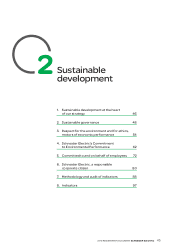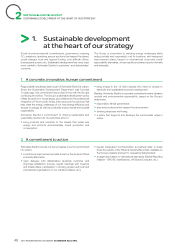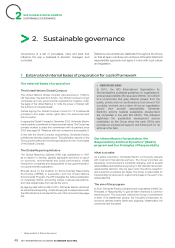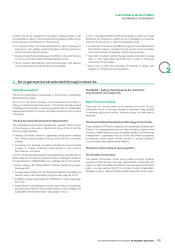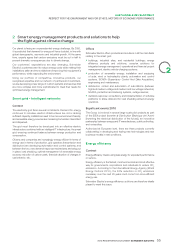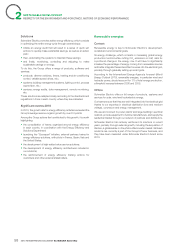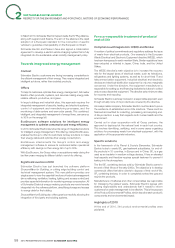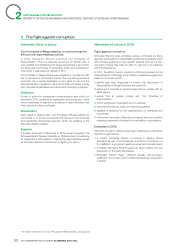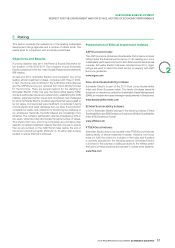APC 2010 Annual Report Download - page 53
Download and view the complete annual report
Please find page 53 of the 2010 APC annual report below. You can navigate through the pages in the report by either clicking on the pages listed below, or by using the keyword search tool below to find specific information within the annual report.
SUSTAINABLE DEVELOPMENT
SUSTAINABLE GOVERNANCE
Dedicated networks
Networks Description
For: Energy Effi ciency Experts and solutions Within the Strategy and Innovation Department, the Energy Effi ciency and
Solutions team rolls out and supports the Company’s and its employees’
transition from a product-based approach to a solution-based approach.
To achieve this, Schneider Electric works with a network of 13,000employees,
who are divided into dedicated sales and marketing teams and supported
by technical experts and its 25 Solution Centers, where our architects are
developing the solutions its customers want today and designing the solutions of
tomorrow.
For the Environment (see page 62-63).
For Human Resources In the area of social policy, each central function executive and activity manager
is responsible for ensuring effective human resources management within his or
her area, implementing the One company program (see Chapter 1, page 19),
deploying all human resources policies (including those covering health and
diversity) and ensuring compliance with Our Principles of Responsibility.
For communities: the network
of Schneider Electric Foundation delegates (see page 84)
4 Planet & Society Barometer, a regular and objective measure
of the Group’s actions
Schneider Electric has used the Planet & Society Barometer as its
sustainable development scorecard since 2005. The Barometer
outlines the Group’s objectives for a three-year period and tracks
progress made in achieving targets for the 2009-2011 period on a
quarterly basis.
There are no recognised standards that defi ne an organisation’s
sustainable development performance. The Planet & Society
Barometer is Schneider Electric’s response to this matter. All its
objectives are voluntary, and none of them respond to any legal
restrictions.
The aim of the Planet & Society Barometer is to:
•bring the corporate community together around sustainable
development objectives;
•communicate on the Group’s improvement plans with
stakeholders.
The Planet & Society Barometer is part of the One company program
and is administered and promoted by the Sustainable Development
Department. It comprises 13 key performance indicators graded over
10. The average of the grades provides the global performance of
the barometer. Departments directly concerned by the improvement
plans (Human Resources, Environment, Access to Energy, etc.),
implement measures to achieve the plans’ goals. Each department
is represented by a project leader, who works directly with local
managers in their respective areas.
With the introduction of the new One company program in 2009,
Schneider Electric defined new ambitions for its sustainable
development approach, following up on its ten targets for 2005-2008
with 13 environmental, economic and social improvement plans.
The table on page 47 presents Schneider Electric’s sustainable
development performance in 2010. When the Barometer was
launched on January 1, 2009, the overall score was 3.00/10. The
overall score increased from 6.00/10 at January1, 2010 to 7.62 at
December31, 2010.
3 Global policies
The Our Principles of Responsibility document is not only Schneider
Electric’s Ethics Charter, it also constitutes a code of conduct. All of
the Group’s policies stem from it (environment, quality, purchases
and the different social policies).
Environmental issues
The fi rst version of Schneider Electric’s environmental policy was
published in 1992, edited in 2004 and fi nalised in October2007. It
aims to improve industrial processes, reinforce product eco-design
and incorporate the Group’s customers’ concerns for environmental
protection, while providing product and service solutions.
Social issues
The Group’s human resources policies cover the following issues:
diversity, recruiting, international mobility, training, leadership skills,
total remuneration and health/safety.
2010 REGISTRATION DOCUMENT SCHNEIDER ELECTRIC 51
2






